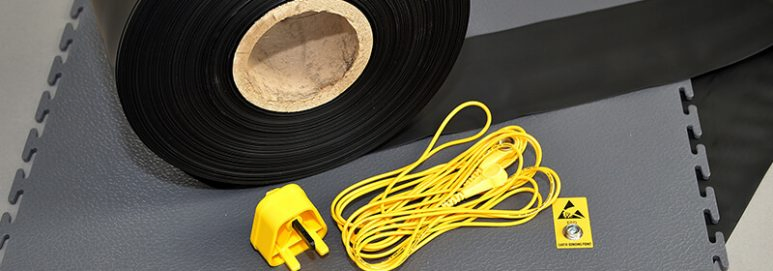
Why the Electronics Industry Needs ESD Flooring
August 27, 2020ESD refers to ElectroStatic Discharge and can be experienced regularly in our day-to-day lives. The severity of the problem ranges between the tiny shock you get from touching a metal door knob after walking across carpet to a lightning bolt that can start fires or even kill people.
It can also be a serious problem in many industrial environments, especially the electronics industry.
ESD Consequences for the Electronics Industry
The main issue from electrostatic discharge is the heat that is produced from the event. Although we may not feel it when we are personally shocked, it can be detrimental to electronic devices.
Failure or Latent Defect
This intense heat can either cause an electronic device to completely fail or it can cause a latent defect. By melting or vaporising the elements within a device, it will no longer be usable and may cause whatever device it is placed in to fail in turn. If it is used in a satellite or aeroplane for example this will be be very costly for the manufacturer.
A latent defect is where the heat can damage a device, but it is still functioning. So, it is difficult to detect where the damage is and, therefore, how it can be repaired. This shortens the life span of the electronic device, causing the manufacturer of the final product to lose money again and could also cause reputational damage to the manufacturer of the electronic component.
Measures to Prevent ESD Events in Electronic Manufacture
Nowadays, electronic devices can be damaged by as little as 25 volts, with hard drive components sensitive to just 10! Which is why methods have been put into place for the manufacturing, testing, shipping, and handling processes.
Employee ESD Accessories
Certain wrist straps and footwear have been designed to control the electrostatic discharge, so it does not affect the electronic devices or components employees are working with. Also, staff can package sensitive devices with certain materials that shield the product from ESD.
ESD Floor Solutions from Ecotile
Ecotile ESD tiles give the electronics industry a high level of protection against electrostatic discharge. They are made with millions of small stainless steel fibres running through them so they are completely grounded and provide constant conductive performance. By positioning them on top of a conductive grid and laying earth points, the electricity flows out to the grid, managing the flow of ESD.
Ecotile has a long-lasting life span, giving the electronics sector the ability to use it as their primary floor. Our tiles are easy to install due to the interlocking design, meaning there will be minimal disruption.
If you have any questions regarding ESD, visit our ESD flooring page or contact us today.

David Bryant-Pugh is sales and marketing manager of Ecotile Flooring. A Member of the Chartered Institute of Marketing (MCIM), David divides his time between creating strategy and tactics for the modular flooring business, and meeting customers to better understand their needs and specific marketplace. Operating across multiple industry sectors (every business has a floor, right!) David’s experience ranges from manufacturing to retail, and everything in between.
Prior to Ecotile, David managed the marketing team at Argos for Business. He previously built a wealth of experience in the foodservice and construction industries as marketing lead. You can find David on LinkedIn

